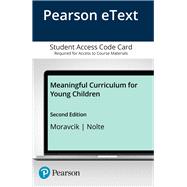Comprehensive, practical, and engaging--a joyful, child-centered book designed to help students understand the content and processes involved in curriculum for young children.
This child-centered approach to understanding and planning curriculum focuses on humanistic and progressive education pedagogy in preschool and primary grades. The authors stress a curriculum that is joyful, has meaning to children, is built upon children's strengths, has intellectual integrity, uses developmentally appropriate pedagogy, and encourages teachers to be passionate learners along with children. The book's personal tone, many practical examples, step-by-step lesson planning process, and children's art and photographs of children bring the content to life. The new edition features updating throughout, a number of new features that add to the understanding and usefulness of the concepts, new sections on teaching curriculum to two-year-olds, and a new connection to current national subject area standards throughout.
For courses in Curriculum in Early Childhood Education.
Pearson eText is an easy-to-use digital textbook that you can purchase on your own or instructors can assign for their course. The mobile app lets you keep on learning, no matter where your day takes you — even offline. You can also add highlights, bookmarks, and notes in your Pearson eText to study how you like.
NOTE: This ISBN is for the Pearson eText access card. Pearson eText is a fully digital delivery of Pearson content. Before purchasing, check that you have the correct ISBN. To register for and use Pearson eText, you may also need a course invite link, which your instructor will provide. Follow the instructions provided on the access card to learn more.










